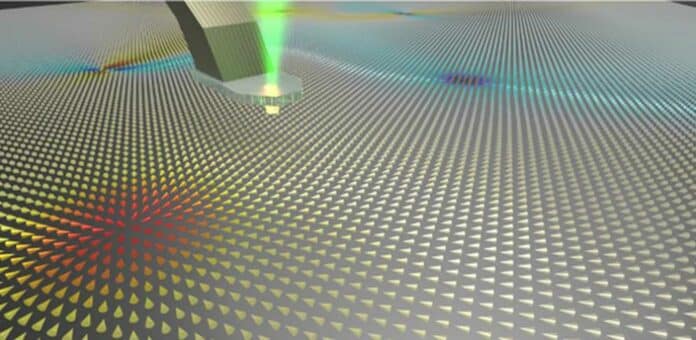Scientists at the University of Cambridge have made an exciting discovery that could lead to greener and faster computers. Using a diamond quantum sensing technique, they observed magnetic monopoles – isolated magnetic charges – in hematite- a material closely related to rust.
This is the first time these isolated magnetic charges have been observed naturally.
When scientists looked at the surface of hematite, they noticed the collective behavior of many spins (the angular momentum of a particle). This breakthrough connects previously hidden swirling patterns with magnetic charges like a secret code.
The equations of James Clerk Maxwell suggest that magnetic objects should exist in a pair of magnetic poles. There are two poles: north and south.
The existence of monopoles was identified in the 19th century. However, James Clerk Maxwell disagreed with it for one of his foundational equations for the study of electromagnetism.
Professor Mete Atatüre, who led the research, said, “If monopoles did exist, and we could isolate them, it would be like finding a missing puzzle piece that was assumed to be lost.”
Scientists proposed a possible mechanism for monopoles in a magnetic substance about fifteen years ago. This potential outcome depended on the north and south poles being significantly apart, making each pole appear isolated locally in an unusual substance known as spin ice.
Nevertheless, a different approach to monopole discovery uses the idea of emergence. The concept of emergence states that traits that are either greater than or distinct from the sum of their parts can arise from the combination of numerous physical things.
In this study, scientists used emergence to reveal monopoles strewn throughout two dimensions, sliding over the whirling patterns on a magnetic material’s surface.
Ferromagnets and antiferromagnets are the two main classes of materials that have whirling topological textures. Antiferromagnets lack a robust magnetic signature, making them harder to investigate, even though they are more stable than ferromagnets.
Using an imaging method called diamond quantum magnetometry, scientists investigated the behavior of antiferromagnets. Without altering the material’s behavior, this method precisely measures the magnetic field on its surface by using a single spin—the intrinsic angular momentum of an electron—in a diamond needle.
In the present investigation, hematite, an antiferromagnetic iron oxide substance, was examined using this methodology. To their amazement, they discovered quadrupoles, dipoles, and monopoles, among other hidden patterns of magnetic charges within hematite.
Co-author Professor Paolo Radaelli, from the University of Oxford, said, “Monopoles had been predicted theoretically, but this is the first time we’ve seen a two-dimensional monopole in a naturally occurring magnet.”
Co-first author Dr Hariom Jani, from the University of Oxford, said, “These monopoles are a collective state of many spins that twirl around a singularity rather than a single fixed particle, so they emerge through many-body interactions. The result is a tiny, localized, stable particle with a diverging magnetic field.”
Co-first author Dr. Anthony Tan, from the Cavendish Laboratory, said, “We’ve shown how diamond quantum magnetometry could be used to unravel the mysterious behavior of magnetism in two-dimensional quantum materials, which could open up new fields of study in this area. Due to their weaker magnetic pull, the challenge has always been direct imaging of these textures in antiferromagnets, but now we can do.”
Journal Reference:
- K. C. Tan, Hariom Jani, Michael Högen et al. ‘Revealing Emergent Magnetic Charge in an Antiferromagnet with Diamond Quantum Magnetometry.’ Nature Materials (2023). DOI: 10.1038/s41563-023-01737-4
